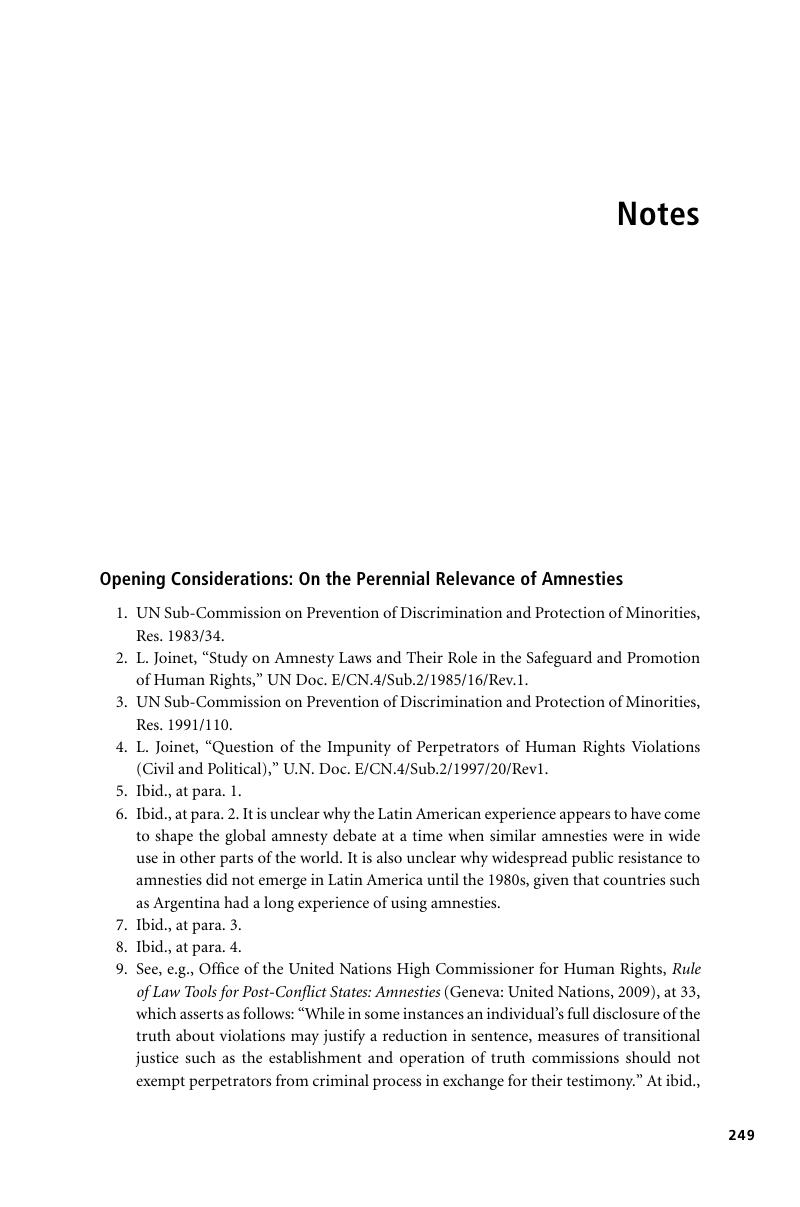Book contents
- Frontmatter
- Contents
- Preface
- Acknowledgments
- Abbreviations and Legal Terms
- Opening Considerations: On the Perennial Relevance of Amnesties
- Part I The Debate on Amnesties
- Part II The Design of Amnesties
- Final Considerations: On the Perennial Contestation of Amnesties
- Appendix 1 Summary Guidelines for Effective Amnesty Design
- Appendix 2 Selected Excerpts from International Legal Instruments
- Appendix 3 Selected Excerpts from Jurisprudence on Amnesties
- Notes
- Index
- References
- Frontmatter
- Contents
- Preface
- Acknowledgments
- Abbreviations and Legal Terms
- Opening Considerations: On the Perennial Relevance of Amnesties
- Part I The Debate on Amnesties
- Part II The Design of Amnesties
- Final Considerations: On the Perennial Contestation of Amnesties
- Appendix 1 Summary Guidelines for Effective Amnesty Design
- Appendix 2 Selected Excerpts from International Legal Instruments
- Appendix 3 Selected Excerpts from Jurisprudence on Amnesties
- Notes
- Index
- References
Summary

- Type
- Chapter
- Information
- Necessary EvilsAmnesties and the Search for Justice, pp. 249 - 346Publisher: Cambridge University PressPrint publication year: 2009
References
- 2
- Cited by



